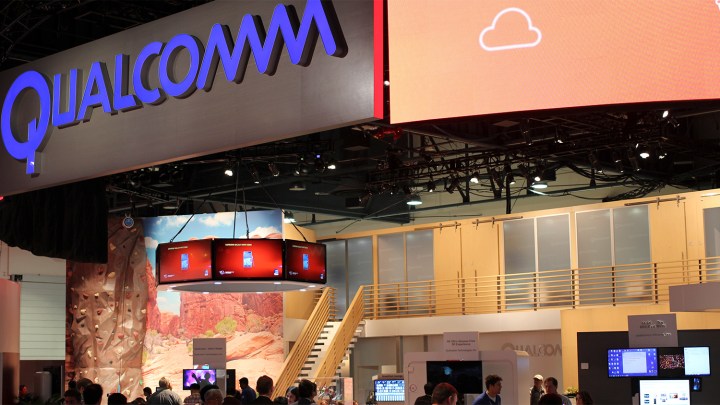
At Mobile World Congress in Shanghai, China, on Tuesday, Qualcomm announced the Snapdragon Wear 1200 platform, a low-powered chipset targeted at compact, single-purpose wearables. That category of devices includes not only activity trackers and pet-tracking beacons, but also Internet of Things devices like parking meters and remote pumping stations.
It’s not Qualcomm’s first foray into power-efficient wearable processors — it launched the Snapdragon Wear 1100 in May 2016. But the 1200 addresses several of the first-gen platform’s biggest shortcomings.
At a minimum, every Snapdragon Wear 1200 device will tap GPS in “multiple regions” for real-time location tracking, including Russia’s GLONASS and the EU’s Galileo. And as was the case with Snapdragon Wear 1100, all devices will ship with Bluetooth and Wi-Fi radios, Qualcomm’s rapid charging technology, and built-in sensors like accelerators and gyroscopes.
The Snapdragon 1200 also doubles down on connectivity. It supports two new subcategories of LTE, M1 and 1, the latter of which maxes out at data speeds between 10 and 50 Kbps. It’s designed with lower-power applications in mind, like smart home monitoring and location tracking — Qualcomm says it expects NB1-enabled devices to get about 10 days of battery life on standby.
“It’s great for anything in real time — anything that requires constant feedback” Matt Dehamer, product marketing for wearables at Qualcomm, told Digital Trends during a briefing ahead of the announcement. “It can count steps and monitor a workout in a fitness tracker and handle basic voice communication ,”
Snapdragon Wear 1200 devices that use M1, on the other hand, won’t last quite as long. But they’ll deliver speeds up to 350 Kbps — fast enough to stream from Spotify in high quality, as well as place voice calls over LTE.
On paper, both M1 and NB1 might seem like a downgrade from the Snapdragon Wear 1100’s Cat. 1 and Cat. 4 LTE, which supported speeds up to multiple megabits per second. But Qualcomm says that every Wear 1200 will come with connectivity built-in. And thanks to the reduced bandwidth requirements, it expects carriers to bundle Wear 1200 smartwatches and fitness bands with prepaid data plans that will be potentially as low as $2 to $3 a month.
Qualcomm is also highlighting new kids smartwatch devices utilizing their Snapdragon Wear 2100, all from Chinese manufacturers.
One, from kid-friendly Chinese brand Genius, sports a waterproof body and supports quick charging, calling via Voice over LTE (VoLTE), and texting and messaging.
Qualcomm says it expects more devices to hit the market in July, ahead of a wider rollout in August.
Despite the focus on low-end and midrange devices, Qualcomm is not letting its high-end smartwatch platform languish. Dehamer wasn’t willing to talk specifics, but said that an announcement regarding the Snapdragon 2000 series platform could come as soon as this year.
“It’s not the end of the road map. Companies are always risk averse until you’ve proven yourself on that higher end,” he said. “Partners like Michael Kors and Movado come from the traditional timekeeping industry, [and] gained some interesting insights that might not be obvious immediately.”
Editors' Recommendations
- Qualcomm’s newest chip will bring AI to cheaper Android phones
- Qualcomm’s Snapdragon 6 and 4 Gen 1 chips are big deals for cheap phones
- Qualcomm’s Snapdragon W5 Gen 1 chip might actually save Android smartwatches
- Qualcomm’s Snapdragon Connect branding denotes superior Wi-Fi
- Meet the Snapdragon 8 Gen 1, Qualcomm’s flagship mobile chip for 2022



